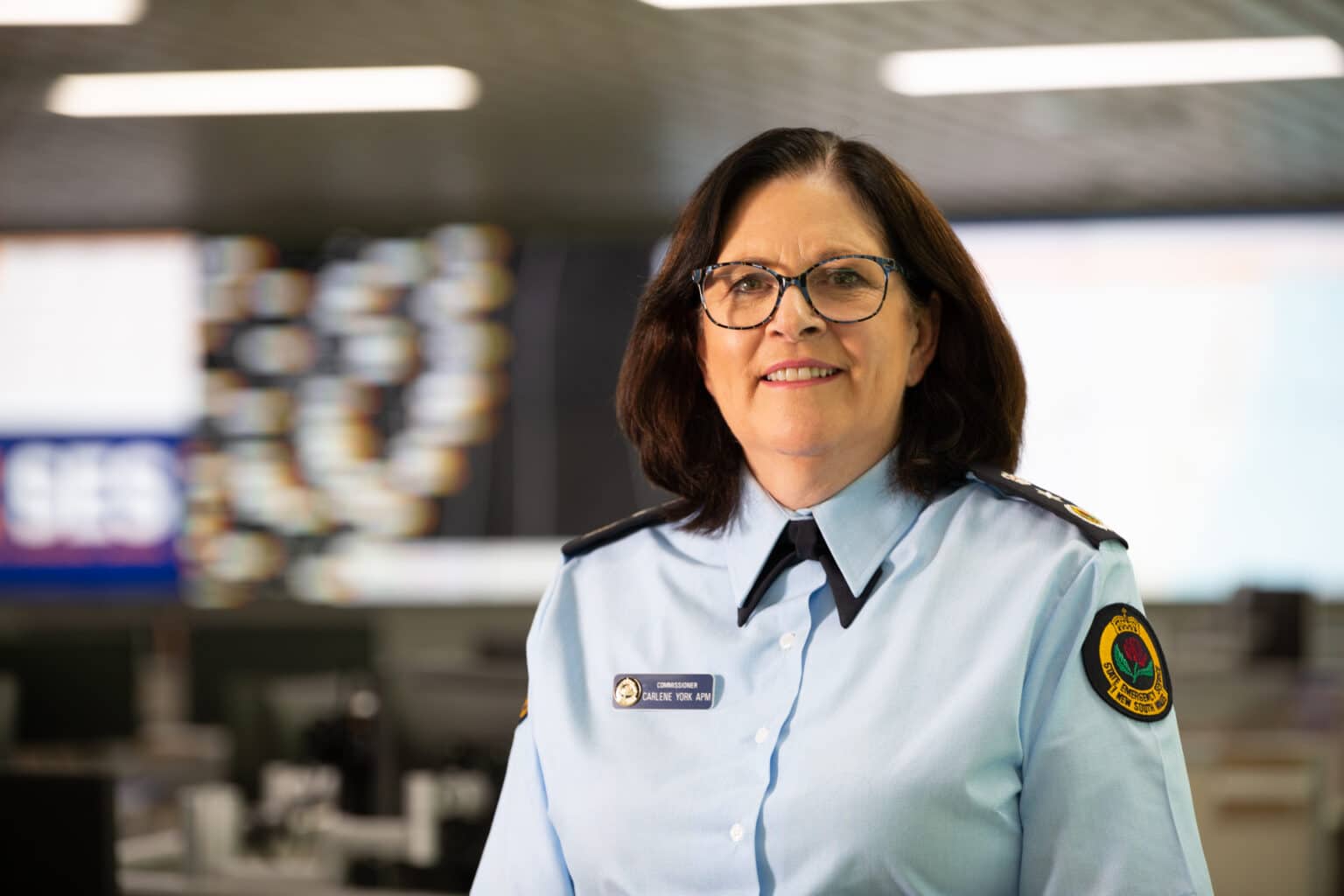IFSJ Influencer: Carlene York, NSW SES Commissioner and AFAC President
- November 22, 2022
- 8:30 am


Iain Hoey
Share this content
Carlene York, New South Wales SES Commissioner and President of the Australasian Fire and Emergency Service Authorities Council (AFAC) shares her views and predictions for the fire and safety industry for the year ahead
With La Niña continuing to bring rain to much of Australia’s already soaked landscape, it is sobering to reflect on the hot and dry devastation of the ‘Black Summer’ bushfire season three years ago. It shows us just how quickly conditions can turn – and the importance of building our resilience to bushfire threat. We must prepare for our next ‘unprecedented’ season.
The 2019-20 bushfire season put Australia on the front page of world news and the front line of extreme weather. It stretched and tested our systems, resources and people. Together, the fire and emergency services have responded, leveraging the networks across the AFAC Membership to build our capability to operate in the risk landscape of the future.
One of the most significant updates to our bushfire response capability is the development and implementation of the Australian Fire Danger Rating System (AFDRS) in September 2022. Where the previous system considered two fuel vegetation types, the Fire Behaviour Index now considers eight, providing a more representative prediction of risk. This allows local fire agencies to better predict risk for communities and help people to prepare.
The highest fire danger rating on the new four-level AFDRS is ‘Catastrophic’ which instructs the public to leave bushfire risk areas for their survival. Fires that start on days of Catastrophic fire danger rating are incredibly dangerous; lives may be lost, and help may not be available. Evacuation is the only safe option on these days.
Indeed, the 2019-20 bushfire season saw conditions that made the old ‘stay and defend’ approach untenable. But what if we did not need to stay to defend a property – what if the property could defend itself?
The Home Fire Sprinkler Coalition Australia (HFSCA), a partnership between AFAC and Fire Protection Association Australia, is exploring the development of a safe, reliable, cost-effective and fit-for-purpose home sprinkler system design to mitigate the risks and impacts of both bushfires and internal house fires.
An integrated internal and external sprinkler system can provide complete protection for the entire dwelling. The internal system also provides the added benefit of providing a system to suppress house fires that can occur at any time of the year. HFSCA is working to develop a standard for this integrated sprinkler system and embed it into the National Construction Code.
Mitigating the impact of bushfire using eternal sprinklers is for property protection, not to provide a refuge for occupants during a bushfire event. In fact, a primary aim of a bushfire residential sprinkler system is to give residents the confidence to leave early in the knowledge that their home will protect itself.
We are told to expect future bushfire seasons to burn at a scale and intensity we have not yet experienced. Despite advancements in aerial and on-ground fire suppression capability, in catastrophic bushfire conditions, the best way to protect life is to step out of Mother Nature’s way. Predicting which path she may take, and adding an additional layer of protection to what we must leave behind, gives us the confidence to act early and quickly to reduce harm and loss during bushfire events.
About the influencer
On 30th October 2019, Carlene was appointed NSW SES Commissioner. Carlene leads the combat agency with legislated responsibility for storms, floods and tsunamis. It is also the largest volunteer provider of rescue services in NSW and supports communities through capabilities in urban search and rescue, vertical rescue, road-crash rescue, land search, community first responders, swift water rescue, community engagement, flood planning and preparedness activities.
Commissioner Carlene York joined the NSW Police Force in 1980 and held various roles during this time including the position of Assistant Commissioner, Human Resources. Her career covered several areas including forensic services, operational policing, prosecuting matters of complex and sensitive nature; strategic review of diverse and complex issues within field and specialist operational at an executive level. Carlene also led several critical commands as Commander in the Forensic Services Group, Northern Region and Human Resources, providing strategic leadership and direction in the areas of human capital, forensics, policy development, operational planning, emergency management response and delivery of frontline police responses.
Carlene was awarded the Australian Police Medal in 2014, is a recipient of the Australasian Council of Women & Policing’s highest honour – The Audrey Fagan Memorial Award and the Australian HR Director of the Year in 2017.
This article was originally published in the November edition of IFSJ. To read your FREE digital copy, click here.



